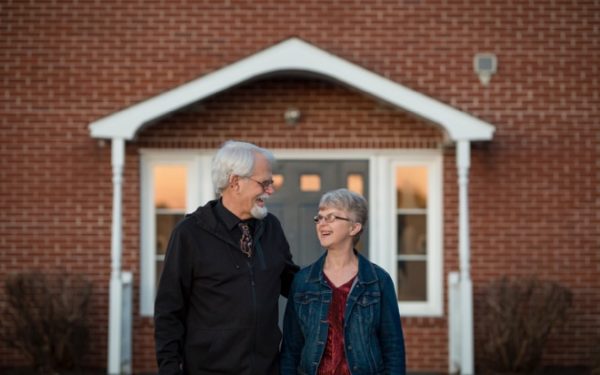Brain plasticity may be a significant factor influencing variable outcomes among adults with cochlear implants. See how hearing therapy can aid recipients to allow for more compressive, positive outcomes.
While access to cochlear implant technology is life changing for many people, we continue to see a wide range of results among adult cochlear implant users. Differences in recipient demographics, case histories, surgical and clinical factors do not fully account for these differences1 2. Consequently, research groups have been looking further for answers.
Learning to hear with cochlear implants
The research evidence suggests that central brain plasticity may be a significant factor influencing these variables. Learning to hear and listen with cochlear implants requires plasticity within the central auditory system3.
Following surgery and activation there is a period of time needed to adjust to your new device. This is particularly important for adults who have developed hearing loss over time4.
For these adults, their central auditory nervous system has developed through the normal framework of sound input. The nervous system adapted over time to hearing loss and then adapted again to the restoration of hearing via a cochlear implant.
So, the cochlear implant user must not only relearn how to use this incoming sound, but must also learn how to use a new kind of signal. This is because the technology cannot return the sound system back to normal, nor provide a “normal” or perfect signal.
In recent research it is suggested that active hearing training is a way to aid in this period of relearning for both low- and high-performing cochlear implant users5.
Active hearing training
We all continue to learn new skills as we mature, but may often require more engaged exposure or active practice to do so. Passive or minor exposure to sound may not be enough for cochlear implant listeners. Exposure to a speech enriched environment and active hearing therapy training may be necessary to target the brain plasticity systems support improvements in speech perception for listeners adapting to a cochlear implant6.
Our cognitive function and central nervous system factors such as long-term and functioning memory capacity are also obvious factors with how well we can adapt to this new sound signal. The speed at which we process information, perceive information and our ability to organize and dissect that information are also important aspects being currently studied7 8 9.
Brain plasticity among adults with cochlear implants
Brain plasticity is clearly an important factor that influences outcome with cochlear implant. Brain plasticity can potentially contribute to a framework on which rehabilitation or hearing therapy programs could be based10.
Research is showing a growing interest in the role of central plasticity, processing and cognition in positive hearing outcomes for adult cochlear implant recipients. For these reasons, there is increased attention on the value of providing a more universal approach to hearing therapy for adults.
To learn more about how you can influence your hearing experience and outcome with cochlear implant click here
- Boisvert I, Reis M, Au A, Cowan R, Dowell RC. Cochlear implantation outcomes in adults: A scoping review. PLoS One. 2020;15(5): e0232421. Published 2020 May 5. doi:10.1371/journal.pone.0232421;
- Moberly AC, Bates C, Harris MS, Pisoni DB. The Enigma of Poor Performance by Adults With Cochlear Implants. Otol Neurotol. 2016;37(10):1522-1528. doi:10.1097/MAO.0000000000001211
- Moore, D., Shannon, R. Beyond cochlear implants: awakening the deafened brain. Nature Neuroscience12, 686–691 (2009). https://doi.org/10.1038/nn.2326
- Glennon, E., Svirsky, MA., Froemke,RC. Auditory cortical plasticity in cochlear implant users,Current Opinion in Neurobiology 2020, 60:108–114
- Drouin, J. R., & Theodore, R. M. (2020). Leveraging interdisciplinary perspectives to optimize auditory training for cochlear implant users. Language and Linguistics Compass. https://doi.org/10.1111/lnc3.12394
- Drouin, J. R., & Theodore, R. M. (2020). Leveraging interdisciplinary perspectives to optimize auditory training for cochlear implant users. Language and Linguistics Compass. https://doi.org/10.1111/lnc3.12394
- Rönnberg, J., Lunner, T., Zekveld, A., Sörqvist, P., Danielsson, H.,Lyxell, B., Dahlström ,O., Signoret,C., Stenfelt,S., Pichora-Fuller,MK.,Rudner, M. (2013). The ease of language understanding (ELU) model: Theoretical, empirical, and clinical advances. Frontiers in Systems Neuroscience, 7, 31.
- Moberly AC, Lowenstein JH, Nittrouer S. Word recognition variability with cochlear implants: the degradation of phonemic sensitivity. Otol Neurotol. 2016;37(5):470-477.
- Moberly AC, Harris MS, Boyce L, Nittrouer S. Speech recognition in adults with cochlear implants: the effects of working memory, phonological sensitivity, and aging. J Speech Lang Hear Res. 2017 Apr 14;60 (4):1046-1061.
- Drouin, J. R., & Theodore, R. M. (2020). Leveraging interdisciplinary perspectives to optimize auditory training for cochlear implant users. Language and Linguistics Compass. https://doi.org/10.1111/lnc3.12394